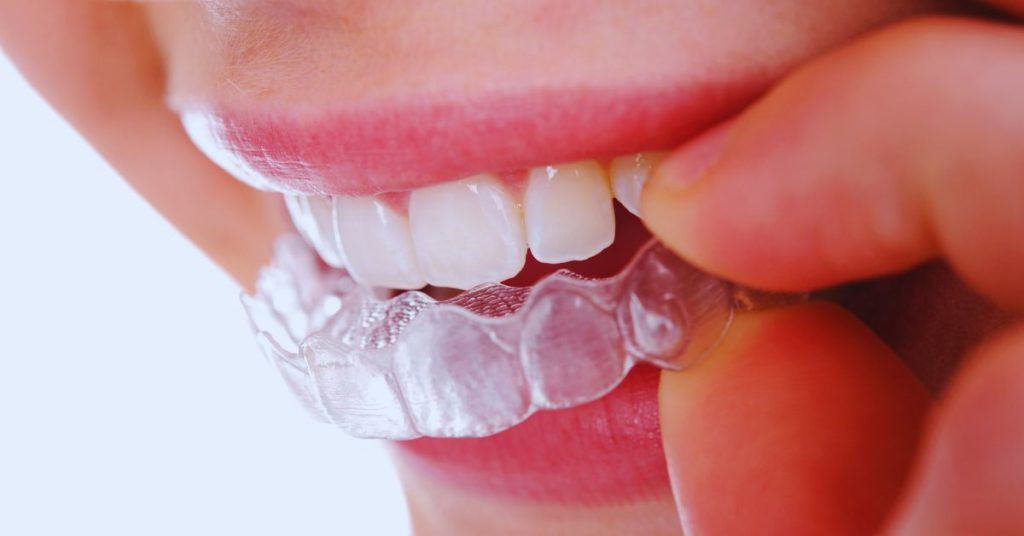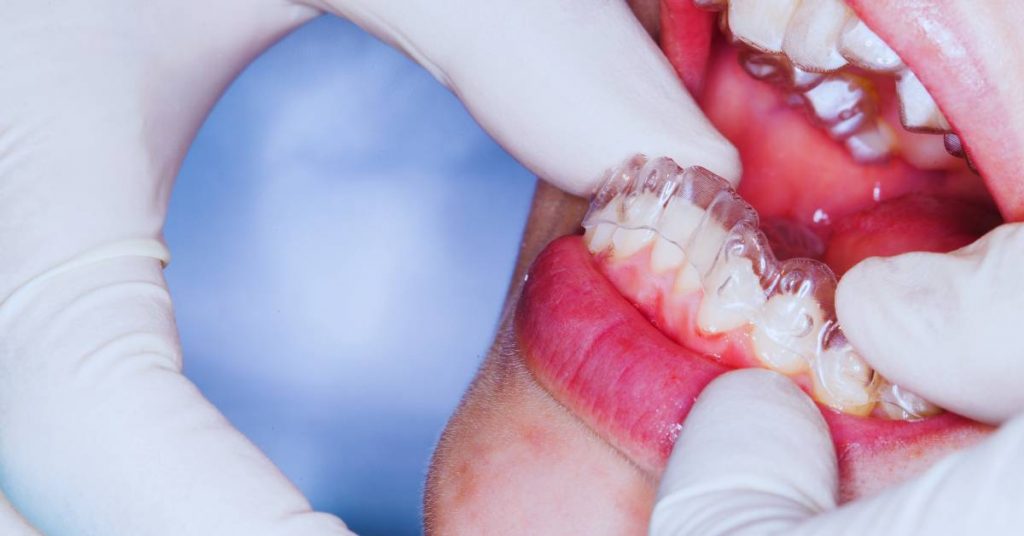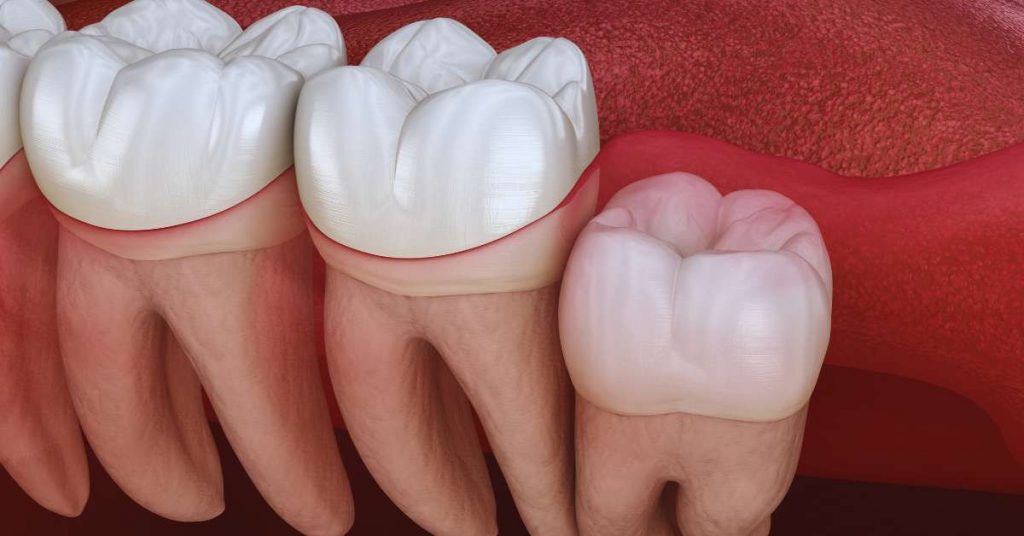Can I Wear My Retainer After Wisdom Teeth Removal?

Can I Wear My Retainer After Wisdom Teeth Removal? Wisdom teeth removal can cause discomfort and swelling, but it's important to continue wearing your retainer to prevent your teeth from shifting.
Yes, you can wear your retainer after wisdom teeth removal. However, it is important to wait at least 24 hours after surgery before putting your retainer in. This will give your gums time to heal and reduce the risk of infection. If you experience any pain or discomfort when wearing your retainer, remove it and consult with your dentist.
If you recently had your wisdom teeth removed and wear a retainer, you may wonder if it is safe to continue using it. Wisdom teeth removal is a standard dental procedure many people undergo to prevent potential oral health problems. However, it can raise concerns about how it may affect your orthodontic treatment and the use of retainers. This article will discuss whether wearing a retainer after wisdom teeth removal is advisable and provide valuable tips for a smooth recovery.

- What is a retainer?
- Wisdom Teeth Removal
- Aftercare for wisdom teeth removal
- Can I wear my retainer after wisdom teeth removal?
- The importance of wearing a retainer
- Do you need a retainer after tooth extraction?
- When to start wearing a retainer after wisdom teeth removal?
- Considerations for wearing a retainer after wisdom teeth removal
- Communicating with your orthodontist
- Tips for wearing a retainer after wisdom teeth removal
- What are you not allowed to do after wisdom teeth removal?
- Common Concerns and FAQs
- Q: Can I wear my retainer immediately after wisdom teeth removal?
- Q: Will wearing a retainer affect my healing process?
- Q: Can wisdom teeth removal cause changes in my bite?
- Q: How often should I clean my retainer?
- Q: What should I do if my retainer doesn't fit after wisdom teeth removal?
- Q: Can you go a week without wearing retainers after wisdom teeth removal?
- Q: Retainers hurt after wisdom teeth removal?
- Q: Should i still wear my retainer if my wisdom teeth are coming in?
- Bottom Line
Wisdom teeth, also known as third molars, typically erupt during the late teens or early twenties. Due to limited space in the mouth, wisdom teeth often become impacted or grow improperly, leading to pain, infection, and other complications. To prevent these issues, dentists or oral surgeons may recommend the extraction of wisdom teeth.
What is a retainer?
Before we delve into wearing a retainer after wisdom teeth removal, let's understand what a retainer is. A retainer is a custom-made dental device that helps maintain teeth alignment after orthodontic treatment. It often prevents teeth from shifting back to their original position.
Wisdom Teeth Removal
Wisdom teeth removal is a surgical procedure performed under local or general anesthesia. The oral surgeon or dentist will make an incision in the gums to access the impacted wisdom teeth. The teeth may need to be extracted in multiple pieces to facilitate removal. After the extraction, the surgical site is usually sutured, and gauze may be placed to control bleeding.
Aftercare for wisdom teeth removal
Proper aftercare is crucial for a successful recovery after wisdom teeth removal. Following the dentist's instructions can help minimize discomfort, reduce the risk of complications, and promote healing. Standard aftercare practices include:
- Taking prescribed pain medications as directed
- Applying ice packs to reduce swelling
- Eating soft foods and avoiding hard, chewy, or spicy foods
- Maintaining good oral hygiene, including gentle brushing and rinsing with saltwater
- Avoiding smoking and using straws, as they can interfere with healing
Can I wear my retainer after wisdom teeth removal?
The answer to this question depends on various factors, such as the type of retainer you have and the specific instructions provided by your orthodontist or oral surgeon. It is essential to consult with your dental professional before making any decisions.

The importance of wearing a retainer
Retainers play a vital role in maintaining the results achieved through orthodontic treatment. They help align your teeth and prevent them from returning to their previous positions. Wearing a retainer as instructed by your orthodontist is crucial for long-term success.
Do you need a retainer after tooth extraction?
Whether or not you need a retainer after tooth extraction depends on a few factors, including:
- The number of teeth that were extracted
- The location of the extracted teeth
- Your individual risk factors for tooth movement
If you had only one or two teeth extracted, you may not need a retainer. However, if you had several teeth extracted, or if the extracted teeth were located in the front of your mouth, you may be at a higher risk for tooth movement. In these cases, your dentist may recommend that you wear a retainer to help keep your teeth in their new positions.
There are two main types of retainers: removable and fixed. Removable retainers are worn like a clear plastic mouthguard. Fixed retainers are bonded to the back of your teeth. Your dentist will recommend the best type of retainer for your individual needs.
If you are told that you need to wear a retainer after tooth extraction, it is important to wear it as instructed by your dentist. Wearing your retainer correctly and consistently will help to ensure that your teeth stay in their new positions and that you maintain the results of your orthodontic treatment.
Here are some additional tips for wearing a retainer after tooth extraction:
- Wash your hands thoroughly before and after handling your retainer.
- Soak your retainer in warm water for 1-2 minutes before putting it in.
- Gently insert your retainer into your mouth.
- If you experience any pain or discomfort, remove your retainer and consult with your dentist.
- Wear your retainer for the full amount of time prescribed by your dentist.
By following these tips, you can help ensure a smooth and uneventful recovery from tooth extraction and help to keep your teeth in their new positions.
When to start wearing a retainer after wisdom teeth removal?
In most cases, waiting until the surgical site has healed before wearing your retainer is advisable. The healing process after wisdom teeth removal can take several weeks, and it is crucial to allow your mouth enough time to recover fully. Your dental professional will provide specific guidelines on when it is safe to resume wearing your retainer.
Considerations for wearing a retainer after wisdom teeth removal
There are a few considerations to keep in mind when wearing a retainer after wisdom teeth removal:
- Mouth sensitivity: After wisdom teeth removal, your mouth may be sensitive and swollen. It is essential to ensure that wearing the retainer does not cause discomfort or harm to healing.
- Altered bite: Wisdom teeth extraction can sometimes lead to changes in your bite alignment. In such cases, adjustments to the retainer may be necessary to accommodate the new bite position.
- Orthodontic treatment stage: If you are in the middle of orthodontic treatment, your dental professional may recommend modifications to your treatment plan or retainer usage to accommodate the changes caused by wisdom teeth removal.
Communicating with your orthodontist
Clear communication with your orthodontist is essential during the healing process. If you have concerns or questions about wearing your retainer after wisdom teeth removal, consult your orthodontist for guidance. They will provide personalized advice based on your specific situation and treatment plan.
Tips for wearing a retainer after wisdom teeth removal
Here are some tips to ensure a smooth experience while wearing your retainer after wisdom teeth removal:
- Follow the instructions: Adhere to the guidelines provided by your orthodontist or oral surgeon regarding when and how to wear your retainer.
- Clean your retainer: Maintain proper oral hygiene by cleaning your retainer regularly. This helps prevent bacteria buildup and keeps your retainer in good condition.
- Gradual usage: Start by wearing your retainer for shorter periods and gradually increasing the duration as your dental professional advises.
- Report any issues: If you experience discomfort, pain, or problems with your retainer, contact your orthodontist immediately for evaluation and adjustments.
What are you not allowed to do after wisdom teeth removal?
Here are some things you should not do after wisdom teeth removal:
- Do not smoke or use tobacco products. Smoking can delay healing and increase the risk of infection.
- Do not drink alcohol. Alcohol can also delay healing and increase the risk of infection.
- Do not use straws. Sucking on a straw can dislodge the blood clot that forms at the extraction site, which can lead to pain, infection, and dry socket.
- Do not spit. Spitting can also dislodge the blood clot.
- Do not brush your teeth near the extraction site. Gently brush your teeth on the other side of your mouth, but avoid brushing near the extraction site until your dentist gives you the okay.
- Do not eat hard, crunchy, or chewy foods. These foods can dislodge the blood clot and irritate the extraction site. Stick to soft, easy-to-chew foods for a few days after surgery.
- Do not exercise strenuously. Strenuous exercise can increase blood pressure and bleeding. It is best to avoid strenuous exercise for a few days after surgery.
- Do not drive. You may be taking pain medication after surgery, which can impair your ability to drive safely. It is best to have someone else drive you home from the dentist's office and for the first few days after surgery.
If you have any questions or concerns about what you can and cannot do after wisdom teeth removal, be sure to talk to your dentist.
Common Concerns and FAQs
Q: Can I wear my retainer immediately after wisdom teeth removal?
Ans: It is generally recommended to wait until your mouth has healed before wearing your retainer. Consult with your dental professional for specific instructions.
Q: Will wearing a retainer affect my healing process?
Ans: A retainer should not interfere with healing if worn correctly. However, it is essential to follow your orthodontist's guidelines.
Q: Can wisdom teeth removal cause changes in my bite?
Ans: Sometimes, wisdom teeth removal can change your bite alignment. Your orthodontist will assess the situation and adjust your treatment plan.
Q: How often should I clean my retainer?
Ans: It is recommended to clean your retainer daily using a non-abrasive toothpaste or a retainer cleaner prescribed by your orthodontist.
Q: What should I do if my retainer doesn't fit after wisdom teeth removal?
Ans: If your retainer feels uncomfortable or does not fit appropriately after wisdom teeth removal, contact your orthodontist for an evaluation and adjustments.
Q: Can you go a week without wearing retainers after wisdom teeth removal?
Ans: Yes, you can go a week without wearing retainers after wisdom teeth removal. However, it is important to start wearing them again as soon as you are comfortable doing so. If you wait too long, your teeth may start to shift out of place.
Q: Retainers hurt after wisdom teeth removal?
Ans: It is possible for retainers to hurt after wisdom teeth removal. This is because the area around your wisdom teeth will be swollen and tender. If your retainer is causing you pain, you can try wearing it for shorter periods of time or taking ibuprofen or acetaminophen to reduce the swelling.
Q: Should i still wear my retainer if my wisdom teeth are coming in?
Ans: Yes, you should still wear your retainer if your wisdom teeth are coming in. Wisdom teeth can cause your teeth to shift out of place, so it is important to wear your retainer to keep your teeth in their proper alignment.
Here are some additional tips for wearing retainers after wisdom teeth removal:
- Start by wearing your retainer for shorter periods of time, such as 2-3 hours a day. Gradually increase the amount of time you wear it each day until you are able to wear it for the full recommended time.
- If your retainer is causing you pain, stop wearing it and contact your dentist.
- Be sure to clean your retainer thoroughly after each use.
- Store your retainer in a clean, dry place when you are not wearing it.
By following these tips, you can help to ensure that your teeth stay in their proper alignment after wisdom teeth removal.
Bottom Line
In conclusion, wearing a retainer after wisdom teeth removal should be approached with caution and in consultation with your orthodontist. It is essential to follow the guidance provided by your dental professional to ensure a successful recovery and maintain the alignment of your teeth. By understanding the specific instructions and considerations related to your situation, you can continue to enjoy the benefits of orthodontic treatment.

Recommendation